How to Install HEADLESS RASPBERRY PI OS on MicroSD Card Using Raspberry Pi Imager | 5-Min or Less
by Charles J Gantt in Circuits > Raspberry Pi
8265 Views, 8 Favorites, 0 Comments
How to Install HEADLESS RASPBERRY PI OS on MicroSD Card Using Raspberry Pi Imager | 5-Min or Less
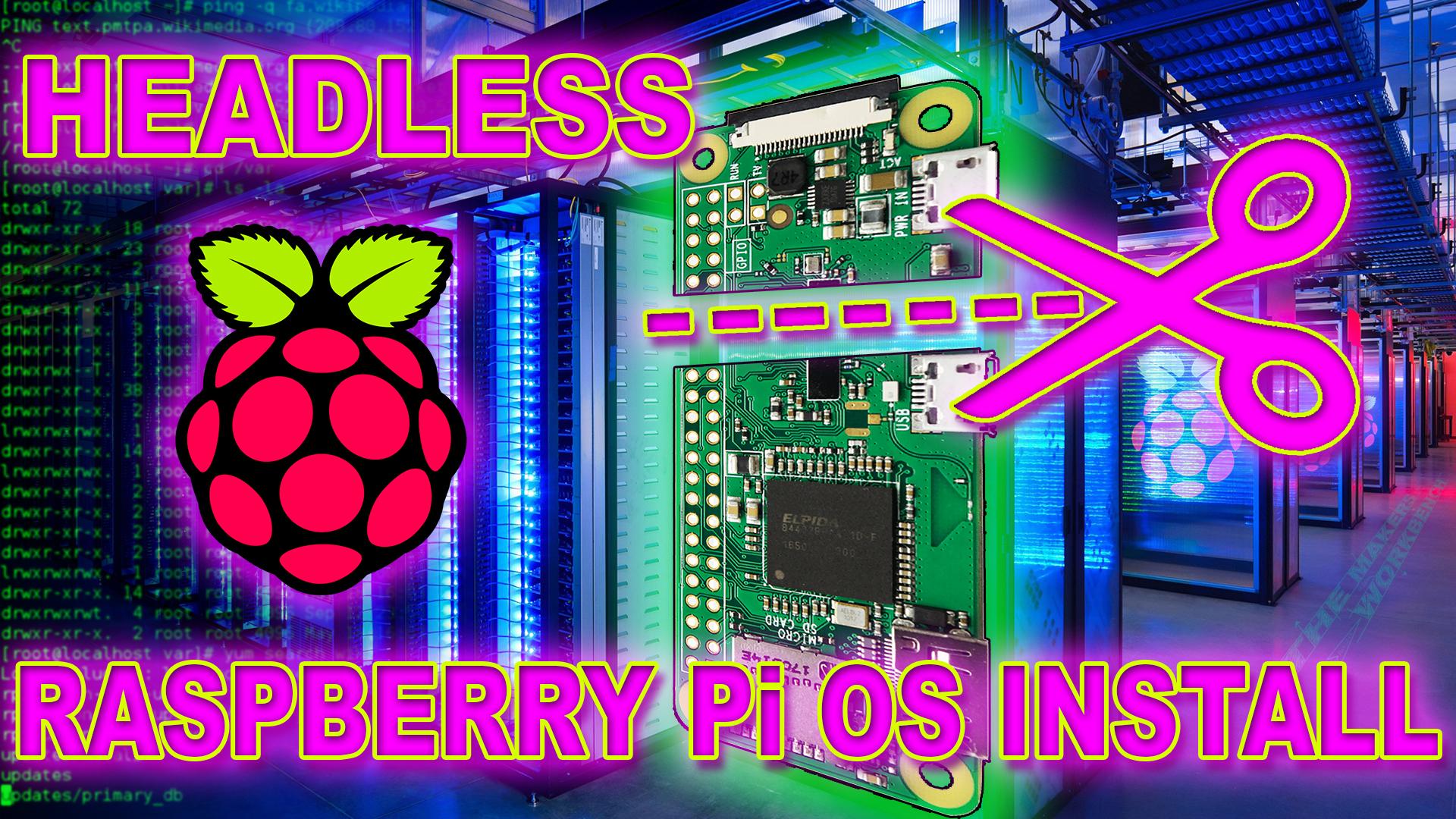
This is a follow-up to my previous instructable where I detailed the process of installing the Full Raspberry Pi OS. Many of my subscribers on YouTube asked for a headless Raspberry Pi OS install tutorial as well since there are several differences between the two types of install. The first part of the process is the same, but there are a few files you will need to create to be able to access the headless Raspberry Pi.
Last year the Raspberry Pi foundation announced Raspberry Pi Imager, a utility designed to simplify the process of installing operating systems onto SD cards for use in Raspberry Pi’s. Raspberry Pi Imager allows users to select the specific operating system they would like to install and then the program downloads the latest version of that operating system in the background before the install begins. After getting back into Raspberry Pi projects recently and realizing how much better this new utility is over the old method, I had to make an updated video for 2021. I decided to share the written tutorial here at Instructables too in hopes to help some new makers who might have got their first Raspberry Pi recently.
Before we move on I want to thank you for reading, and ask that you follow The Makers Workbench on Instagram, YouTube, and consider supporting content like this at Patreon or as a Member of our YouTube Channel. If not us, please consider supporting other makers in the community.
Supplies
You need a computer running Windows 10, Mac OS, Ubuntu, or another working Raspberry Pi with a monitor to install Raspberry Pi OS. You also need a Class 10 UHS-1 MicroSD Card at least 8GB in capacity, but I recommend 16GB or more. Finally, you will need a card reader. If your computer has one built-in, you're good to go. If not, you will need to use an external card reader.
I've listed the hardware I recommend for this tutorial below. Please note that these are affiliate links, and The Makers Workbench will receive a small commission on any revenue they generate. This is how we pay the bills, and can continue to create helpful and educational content like this.
Download and Install Raspberry Pi Imager

Download Raspberry Pi Imager from RaspberryPi.org/software. There are versions for Windows, Mac, Ubuntu, and Raspberry Pi OS itself. Chose the one that works for you, and install it just like you would any other program.
Run Raspberry Pi Imager and Format the SD Card
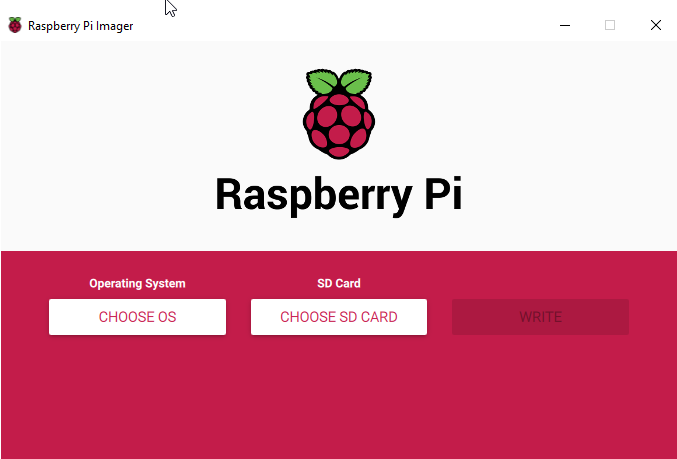
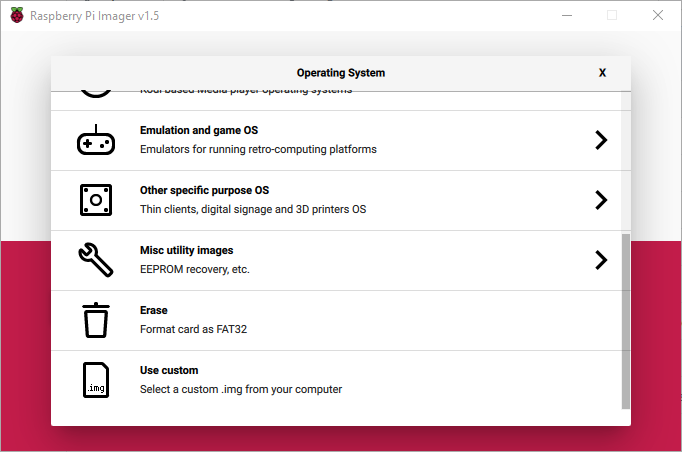
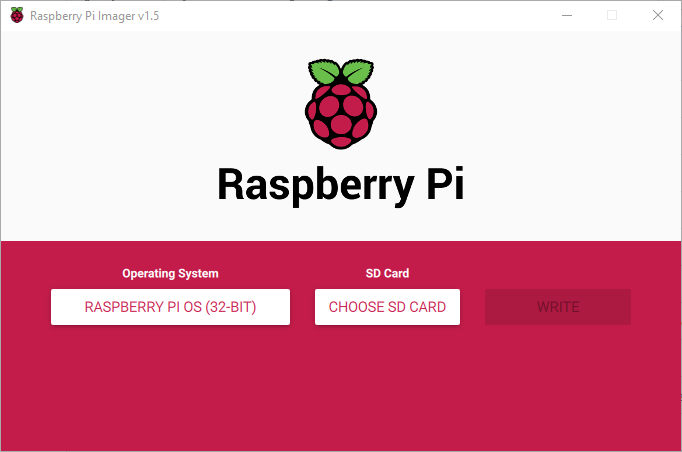
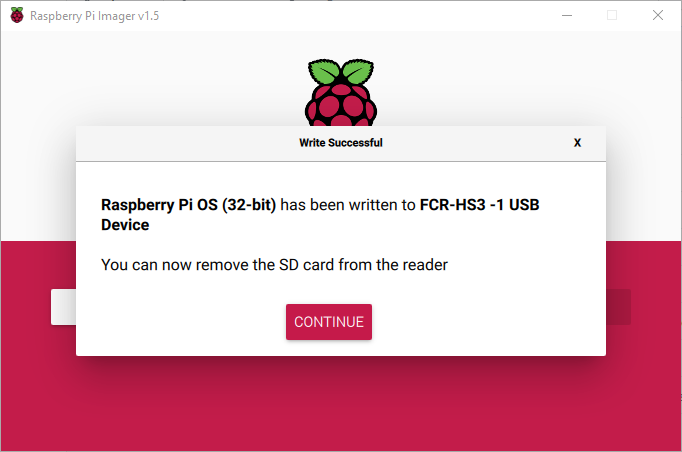
- With the target SD Card inserted into your computer or external card reader, open Raspberry Pi Imager.
- When you run Raspberry Pi Imager you are presented with two options: Choose OS and Choose SD Card.
- Scroll down to the bottom of the list and click on the Erase option.
- Now click the "Choose SD Card" Option and select the target SD Card. Note that any data still on this SD card will be erased forever, and you should ensure that you have a backup of any files you would like to keep.
- With the SD Card Selected the "Write" option becomes available. Click Write and wait for the process to complete. Once the process is complete, a notification window will open letting you know that it's now ok to remove the SD card from the reader. Remove the SD Card and reinsert it into the reader to make it available again.
Burn the Raspberry Pi OS Image to the SD Card
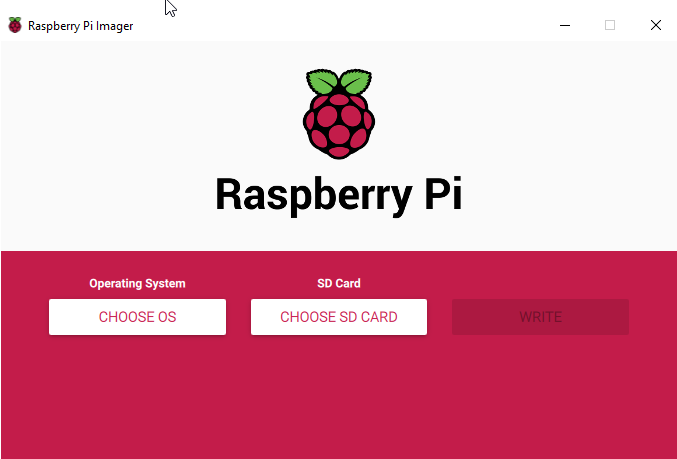
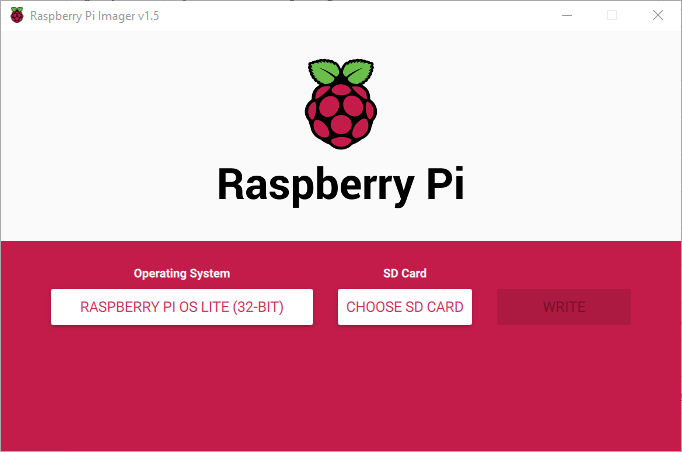
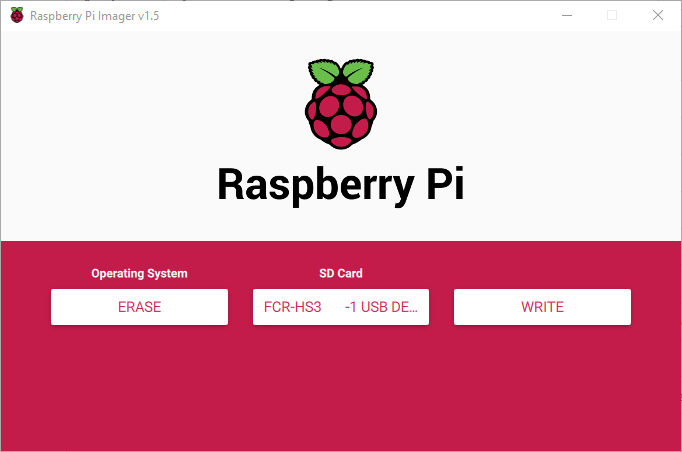
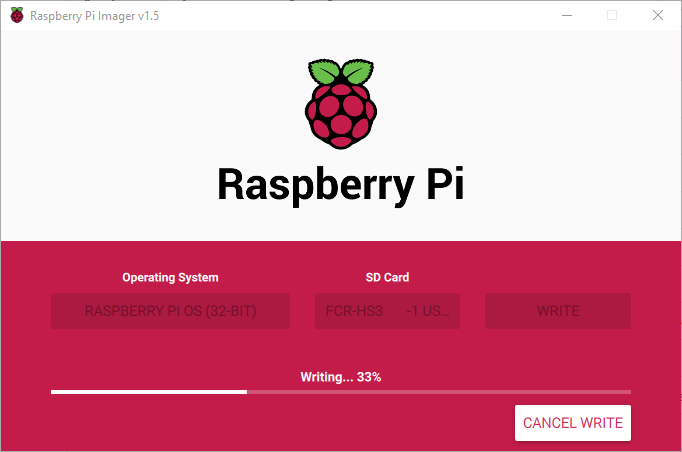
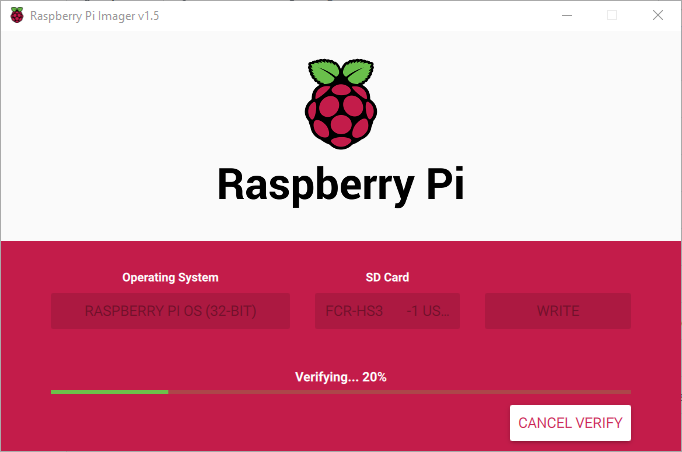
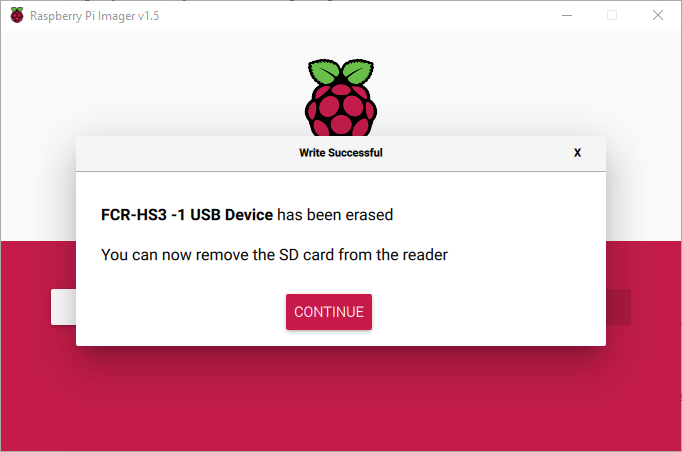
- With a freshly formatted SD card, we can now move on to installing the operating system.
- Click the "Choose OS" button, and select one of the available operating systems. For the purpose of this tutorial we will be using the top option, Raspberry Pi OS Lite (32-Bit). This version of Raspberry Pi OS does not include a preinstalled-GUI, this means that there is no desktop environment wasting space and resources when it's not needed.
- Now select the SD card we just formatted in the previous step.
- The "Write" option will become available. Click "Write" to begin burning the image to the SD card.
- It can take anywhere from a few minutes to upwards of half an hour for the process to complete depending on the quality and speed of the SD card, card reader, and computer.
- Note: Be patient and wait for this process to complete. If you remove the SD card, unplug the card reader, or shut down the computer at any point during this process, the card will become bricked and unusable.
- Once Raspberry Pi Imager has finished writing the files to the SD card, it will verify that the image on the SD card is identical to the image file used to burn the image. This usually takes less than a minute but could take longer.
- When the verification process is complete, a notification window will open letting you know that the write was successful and that it's now safe to remove the SD card.
- If you're going to run this install with a monitor, you are good to go.
- If you plan on running headless, there are a few more steps that you need to take. I cover them in another instructable that can be found here.
Create SSH File and Save in Boot Directory
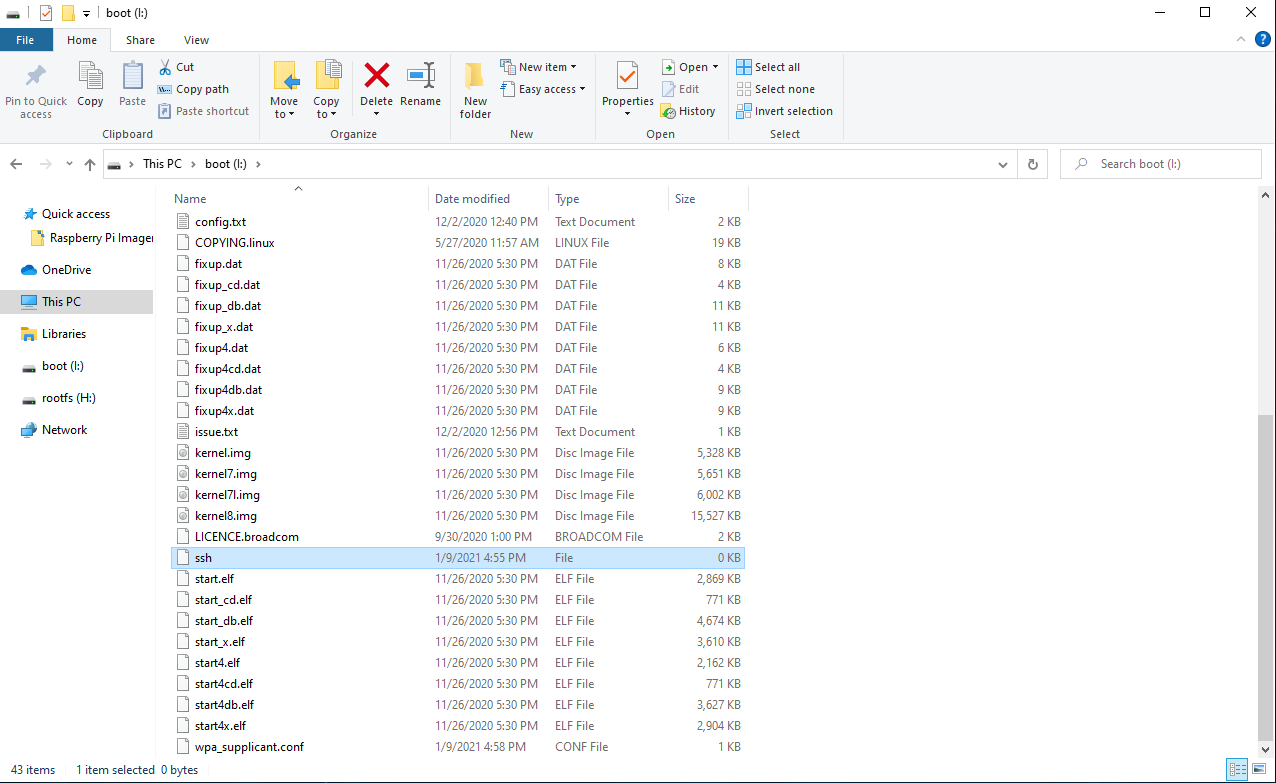
- Since this is a headless version of Raspberry Pi OS, there is no desktop environment in which to set up things like SSH and WiFi, so we need to do that before we insert the SD card into a raspberry pi.
- SSH is disabled by default for security reasons, and to enable it we simply need to create a blank file called SSH and drop it into the boot partition of the SD card. To do this, open Notepad, or the equivalent that's available on your computer's operating system.
- Don’t type anything, and simply save the file with the file name of “ssh”. If the program you are using adds an extension to the end of this file name, such as .txt, you need to open the boot partition, locate the ssh.txt file, and delete the extension. You may get a warning that says something about the file becoming unusable, but ignore this and continue. The boot partition (aka "boot" or "boot directory" will be the smaller of the two partitions on the SD card.
- When the Pi boots, it looks for the ssh file. If it is found, SSH is enabled and the file is deleted, but before you can move on to installing the SD card and booting the Pi up for the first time, you will also need to enable WiFi if you are not using the ethernet jack on a standard Raspberry Pi. Enabling WiFi is required if you are using a Raspberry Pi Zero.
Setup WiFi Before First Boot
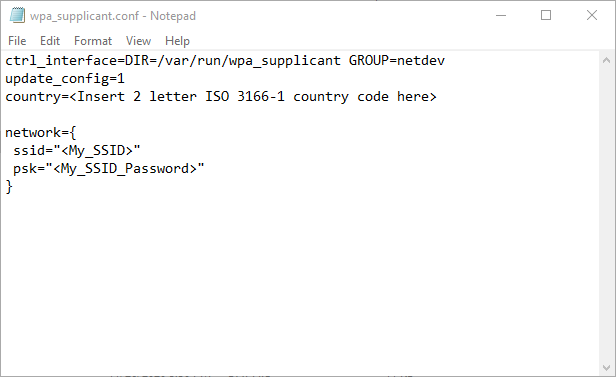
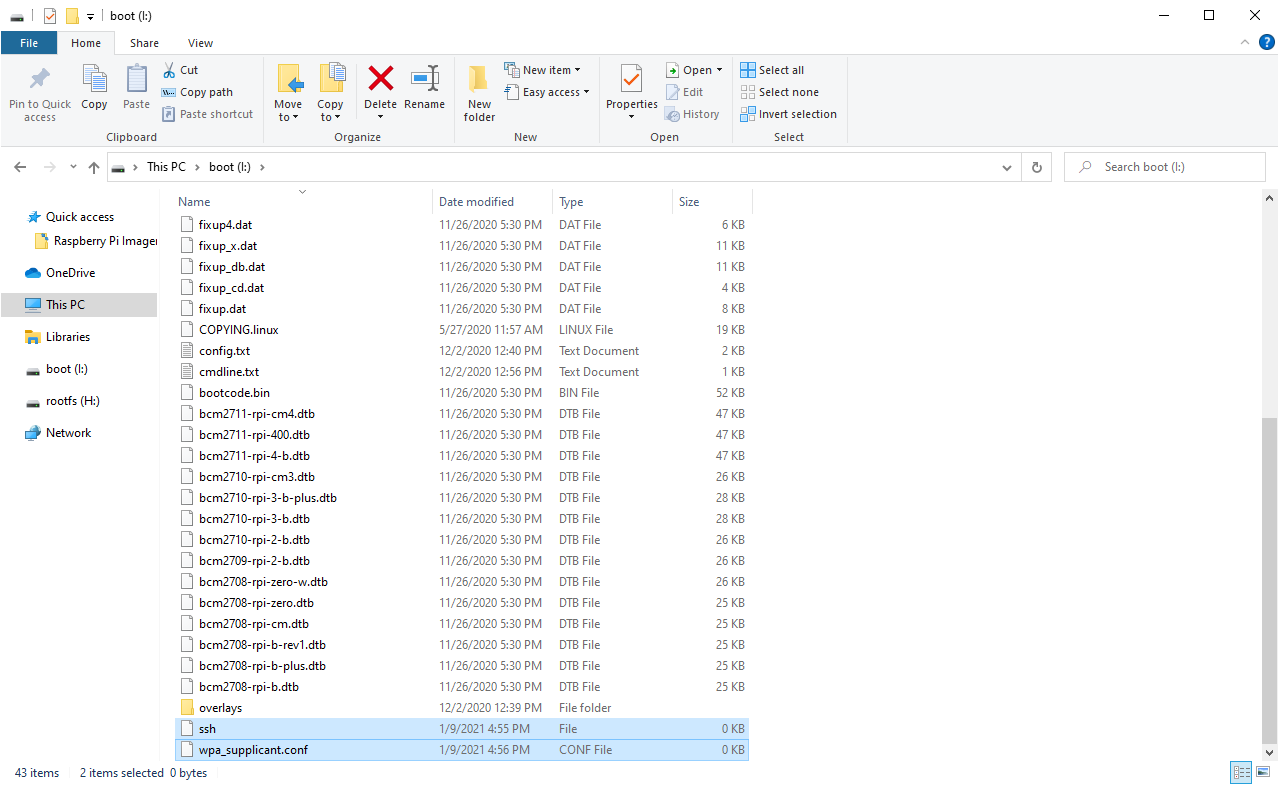.png)
- With SSH configured, we can move onto getting WiFi setup.
- Visit Raspberrypi.org/documentation/configuration/wireless/headless.md and scroll down until you see this bit of code. Highlight this block of code, and copy it to your clipboard.
- Now open another blank Notepad, and paste in the code you just copied. Next, you will need to enter your WiFi’s SSD in this field, and your WiFi password in the next field.
- Now go back to the raspberry pi.org page we have open and copy the file name you see here. Go back to the Notepad document, and save the document as “wpa_supplicant.conf”
- If you followed these instructions correctly, you can insert the SD card into a Raspberry Pi, and after a few minutes, you should be able to SSH in using a terminal such as Putty and by using the standard login credentials listed below.
Default Raspberry Pi Login Information:
- User Name: pi
- User Password: raspberry
Watch the Video Version of This Tutorial and Consider Supporting the Makers Workbench
Official Documentation & Sources
- RaspberryPi.org Headless Documentation: Visit RaspberryPi.org/Documentation
- Download Raspberry Pi Imager: Visit RaspberryPi.org/software
- Read More About Raspberry Pi Imager: Visit RaspberryPi.org/blog
Please Consider Supporting TheMakersWorkbench
Making things on YouTube is my new full-time job thanks to the global pandemic and resulting economic downturn, and I could never make that happen if it weren't for my viewers, so please consider joining my YouTube channel today as a subscriber or channel member, and/or donating at one of the links below. Every subscription, donation, comment, and like is greatly appreciated.
✅ Youtube https://www.youtube.com/c/themakersworkbench
✅ Instagram: https://instagram.com/themakersworkbench
✅ PayPal.me: https://www.paypal.me/themakersworkbench
✅ Donate Via Patreon: https://www.patreon.com/themakersworkbench
✅ Subscribestar: https://www.subscribestar.com/themakersworkbench
✅ TMWB's Website: https://www.themakersworkbench.com